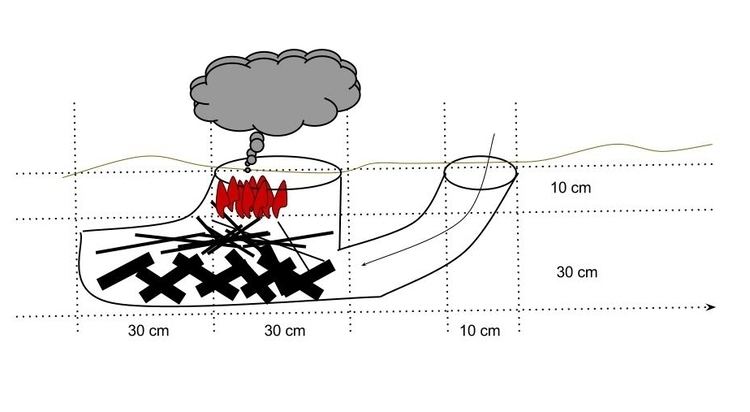 | ||
Similar Fireworks, Bonfire, Fire | ||
A fire pit is an enclosure designed to contain a fire for purposes of cooking, entertainment or ambiance. Most commonly, backyard fire pits use wood, gas or gel as fuel.
Contents
Gas fire pits
Commercially available gas fire pits can be purchased as complete kits, unfinished enclosures or individual components. Complete kits require the least amount of setup knowledge but offer the least customizability. Individual components allow for more customizability but require greater technical knowledge to set up. Unfinished enclosures offer a balance between customizability and setup knowledge. These fire pits are commonly made of pre-cast concrete, metal and/or a combination of metal and stone. They are most commonly fueled by natural gas, propane (LP) or bio ethanol. Natural gas and propane burners are certified under the American National Standards Institute, Canadian Standards Association and Conformité Européenne standards.
Fire pits may also take the form of fire tables, combining the usability of a standard coffee or dining table with the ambiance of a fire pit.
Wood fire pits
Wood fire pits offer simple setup and produce a much greater amount of energy than gas fire pits. However, wood fire pits require a stockpile of fuel and maintenance during use. Ash generated also needs to be removed after each use. Due to the increased amount of heat generated by a wood fire, greater care must be taken when installing near combustibles.
Gel fuel fire pits
Gel fuel fire pits offer a convenient fire feature option due to their relatively simple setup. These units operate on gel fuel canisters, allowing for clean, odorless burning. These fire features put off much less heat than other varieties of fire pits, but as a result, many are small enough to sit on tabletops and are safe for indoor use.
The Dakota smokeless fire pit
The Dakota fire pit is an efficient, simple fire design that produces little to no smoke. As depicted in the illustration, two small holes are dug in the ground: one for the firewood and the other to provide a draft of air. Small twigs are packed into the fire hole and readily combustible material is set on top and lit. The fire burns from the top downward, drawing a steady, laminar stream of fresh air from the air hole as it burns. Because the air passes freely around the fuel, near complete combustion is achieved, the result being a fire that burns strongly and brightly and with little or no seen smoke. The Dakota fire pit is a tactical fire used by the United States military as the flame produces a low light signature, reduced smoke, and is easier to ignite under strong wind conditions.
History
Many cultures, particularly nomadic ones would cut the turf above the fire-pit in a turf cutting ceremony, replacing the turf afterwards to hide any evidence of the fire. Elements of this ceremony remain in traditional youth organisations such as the Woodcraft Folk.
Archaeological significance
The remains of fire pits preserve information about past cultures. Radiocarbon dating from charcoal found in old fire pits can estimate when regions were first populated or when civilizations died out. Bones and seeds found in fire pits indicate the diet of that area.
In archaeological terms fire pits are referred to as features because they can be seen and recorded as part of the site but cannot be moved without being destroyed.
